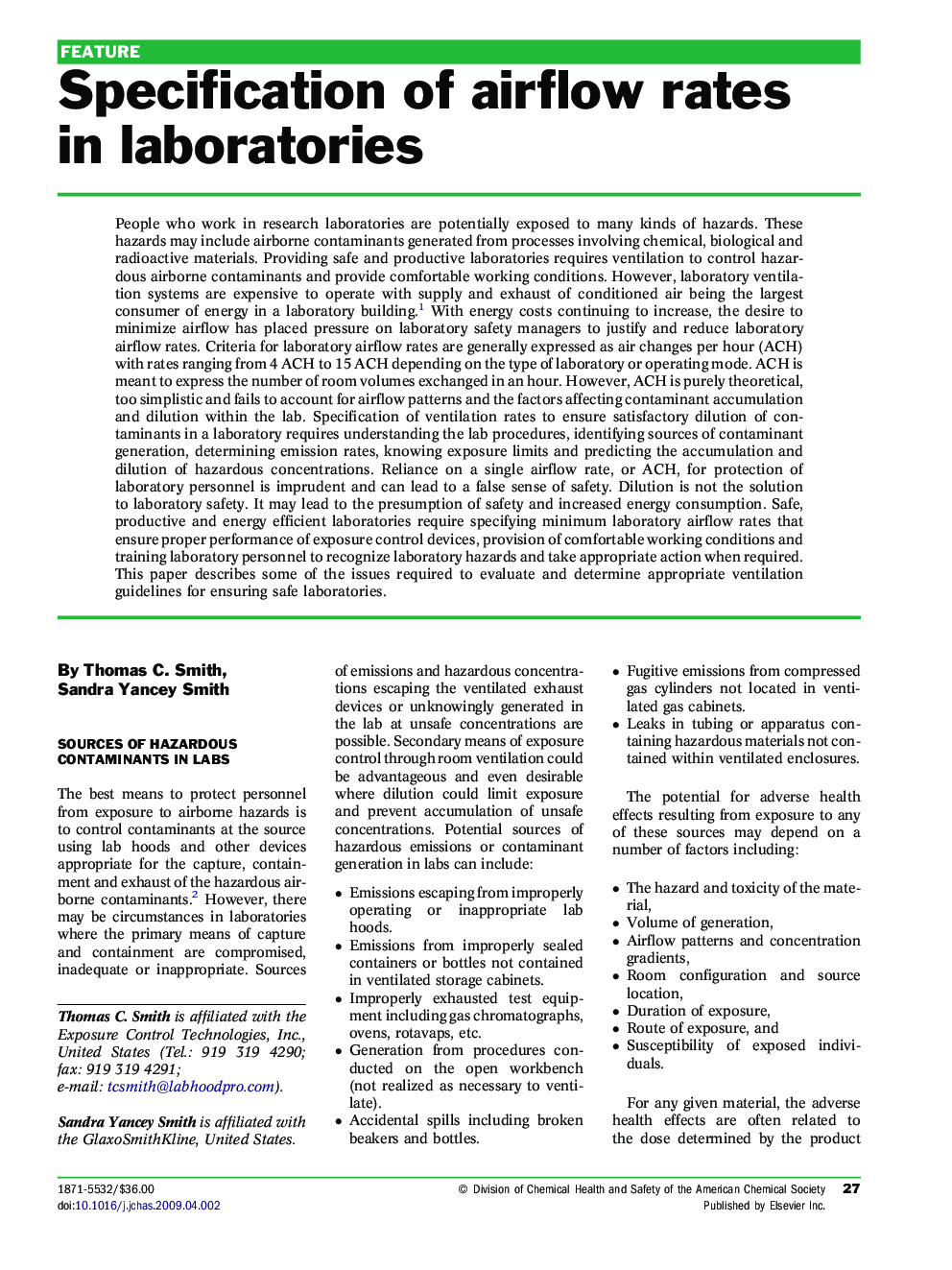| Article ID | Journal | Published Year | Pages | File Type |
|---|---|---|---|---|
| 574480 | Journal of Chemical Health and Safety | 2009 | 9 Pages |
People who work in research laboratories are potentially exposed to many kinds of hazards. These hazards may include airborne contaminants generated from processes involving chemical, biological and radioactive materials. Providing safe and productive laboratories requires ventilation to control hazardous airborne contaminants and provide comfortable working conditions. However, laboratory ventilation systems are expensive to operate with supply and exhaust of conditioned air being the largest consumer of energy in a laboratory building.1 With energy costs continuing to increase, the desire to minimize airflow has placed pressure on laboratory safety managers to justify and reduce laboratory airflow rates. Criteria for laboratory airflow rates are generally expressed as air changes per hour (ACH) with rates ranging from 4 ACH to 15 ACH depending on the type of laboratory or operating mode. ACH is meant to express the number of room volumes exchanged in an hour. However, ACH is purely theoretical, too simplistic and fails to account for airflow patterns and the factors affecting contaminant accumulation and dilution within the lab. Specification of ventilation rates to ensure satisfactory dilution of contaminants in a laboratory requires understanding the lab procedures, identifying sources of contaminant generation, determining emission rates, knowing exposure limits and predicting the accumulation and dilution of hazardous concentrations. Reliance on a single airflow rate, or ACH, for protection of laboratory personnel is imprudent and can lead to a false sense of safety. Dilution is not the solution to laboratory safety. It may lead to the presumption of safety and increased energy consumption. Safe, productive and energy efficient laboratories require specifying minimum laboratory airflow rates that ensure proper performance of exposure control devices, provision of comfortable working conditions and training laboratory personnel to recognize laboratory hazards and take appropriate action when required. This paper describes some of the issues required to evaluate and determine appropriate ventilation guidelines for ensuring safe laboratories.
